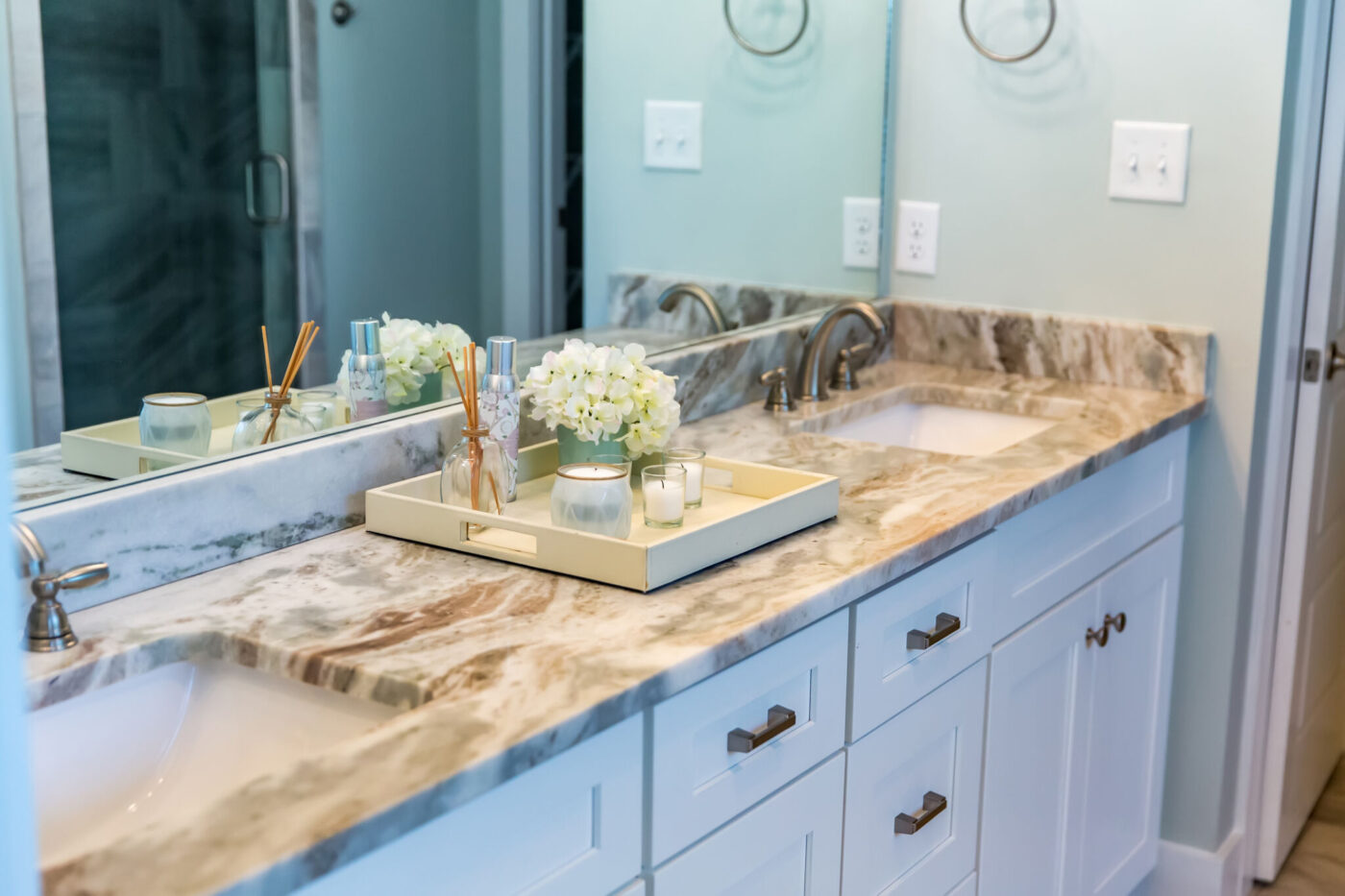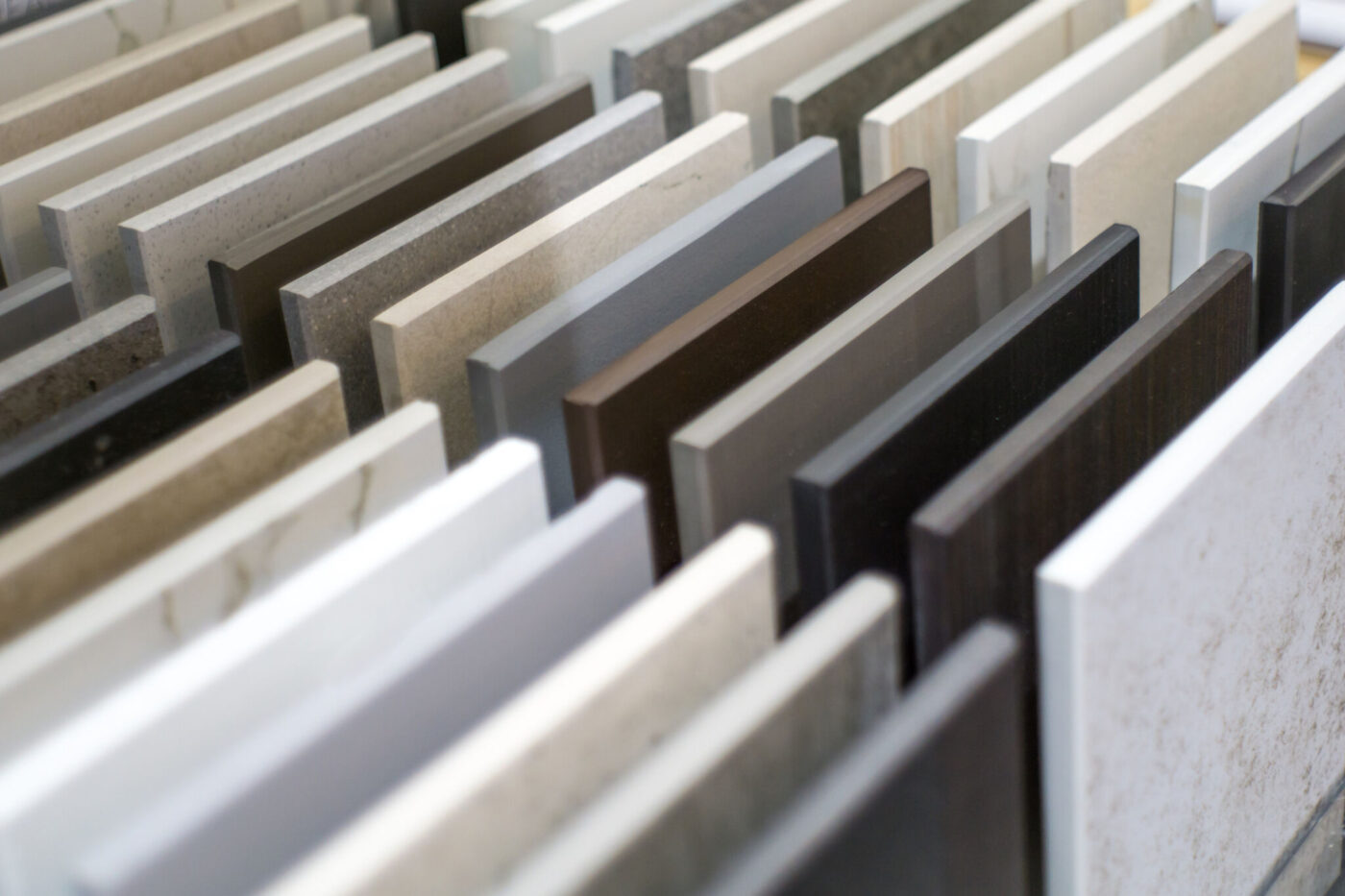The Different Types of Bathroom Vanity Tops
If you are remodeling your bathroom, you may be wondering what different types of bathroom vanity tops are available. Bathroom vanity tops take a lot more traffic than you would think, so it is essential to find a product that will hold up to daily use, be easy to clean and care for, and look beautiful.
Why Are Bathroom Vanity Tops Important?
Bathroom vanity tops are expensive. In addition, they are a significant focal point in bathrooms and get a lot of wear and tear. Because of these reasons, you feel pressured to make the right choice – something that looks and functions perfectly in your bathroom. In this post, I will explain the different types of bathroom vanity tops to help you make a decision faster and easier.
Examples Of Bathroom Vanity Tops
Stone

Price Range
Stone tops have been considered a luxury item for many years. There are lots and lots of gorgeous stones available – and there are also lots and lots of price points. Fabricated stone (fabricated means it is cut to fit your bathroom vanity, sink, and faucet) begins at around $45 per square foot. After that, it goes up into the $300 per square foot range. If you’ve decided that your bathroom vanity top will be the big focal point in your bathroom, you might want to allocate more of your budget to your countertops and keep something else in your bathroom on the simple side.
Research
When buying stone (granite, marble, etc.), research and understand how that particular stone will hold up in a bathroom setting. When I remodeled my current home seven years ago, I chose a polished Carrara marble for the countertops. My tops are dull because of toothpaste, makeup remover, and contact lens solution. I’m okay with it because my fabricator tried to talk me out of it, but I could not be persuaded! I’m okay with the tops being dull, as long as they don’t get stained. I clean and seal them regularly.
Shopping For Stone
When my clients go shopping for stone, I have them try to pick three they will be happy with, then I call my fabricator (the guy who cuts the stone to fit) and ask him of the three choices, which is the most durable. I recommend you find your fabricator first (google “stone fabricators near me”), then ask where they would like you to go to look at slabs.
It is also a very good idea to check with fabricators in your area to see if they have remnants (pieces of stone left over from a previous fabrication) you can look through. That’s a great way to find a lovely stone at a lesser cost, particularly if you have a small vanity.
Quartz

Quartz is a manufactured product that is supposed to mimic granite or marble. And let me say, it does an excellent job. If quartz is already installed in a kitchen, I have difficulty telling by touching it. It has the same cold, hard feel that real granite or marble does.
When companies started making quartz in the 60s, it was made using quartz crystals and polymer resins. I don’t know if this is what it is still made out of today, but I will say in the last ten years, they have come a long way toward getting the product looking very natural. Its popularity has gone off the charts. I wish this were a cheaper alternative to granite and marble, but sadly it isn’t. They all cost about the same.
When you shop for stone and wonder which are natural and which are manufactured, the stone quarried out of the ground has irregular edges. On the other hand, manufactured quartz slabs are all the same size and are true rectangle.
Both natural stone and quartz have under-mounted porcelain sinks that are very durable.
Cultured Marble

Cultured marble is also a manufactured product and has been installed in millions of bathrooms across America over the past 50 years. It’s made of plastic resins, dies, and maybe, marble dust. While cultured marble sounds a lot like quartz, it is not. Cultured marble is poured to fit your situation and has an integral sink. It does not look nor feel as nice as quartz. To me, cultured marble feels like plastic. I’m no fan, but it has its benefits because it is still being used. It is pretty easy to clean up; it’s relatively durable but does scratch. After about ten years, the finish starts to break down around the drain, and it will get discolored. I’ve seen this a lot in the bathrooms I’ve remodeled.
What makes me crazy about cultured marble is that it still isn’t what I would call cheap. I often go to my stone fabricator shop to find a remnant (a piece of stone left over after they cut the countertops for another project.) It costs just $200-$300 more than a cultured marble countertop.
Closing
If you are remodeling your bathroom or building a new home, you have a lot of choices to make. I aim to give you the details and background information you need to make an informed decision quickly and easily. So save yourself precious time, money, and bad decisions by subscribing to my blog! If there is something you would like me to post about, drop me a line and let me know. I’ll share everything I know, promise!
For more free information on home remodeling, visit my blog. I want you to remodel your home without fear of being ripped off, going massively over budget, or having your home torn up for months.
If you are already working on a home remodel and need some friendly, honest advice on what to do next, sign up for my 1-on-1 coaching! For 30 minutes, I will answer any question about home remodeling and work as hard as possible to get you over whatever is hanging you up.
